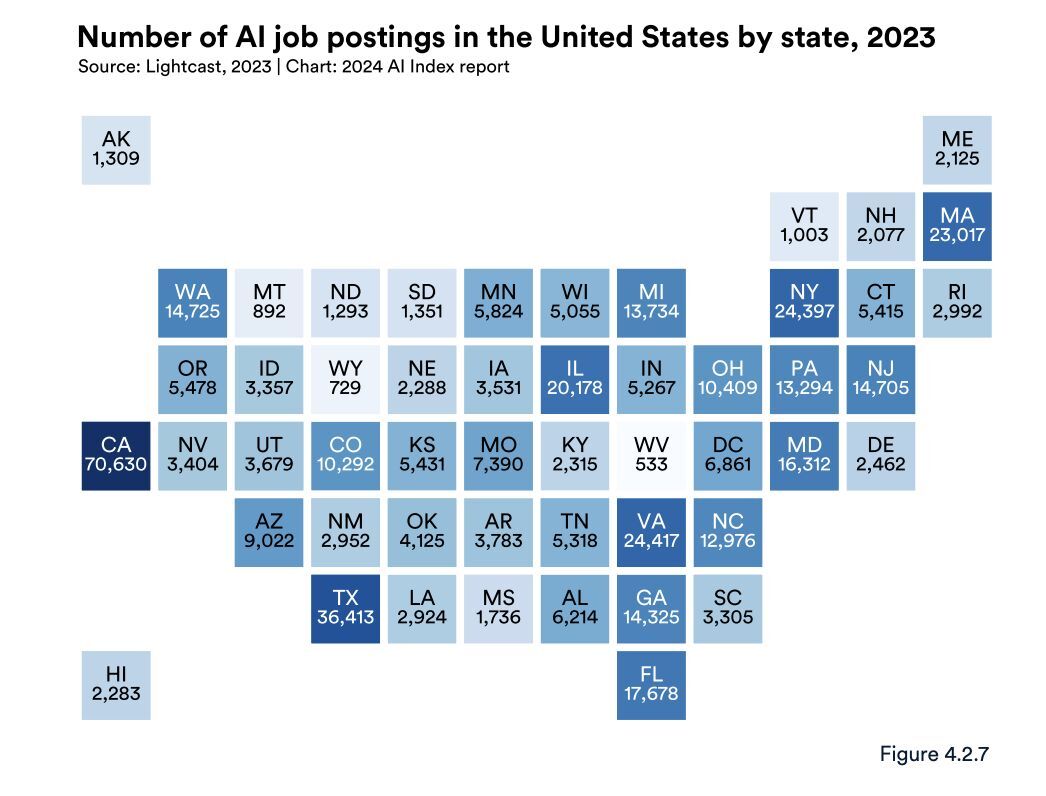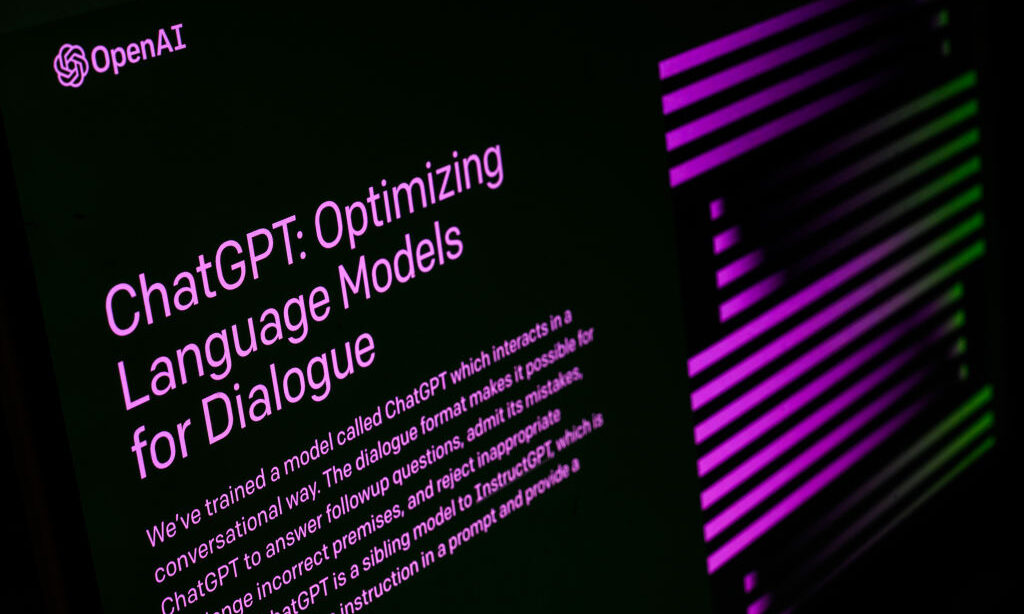The desire for artificial intelligence skills in new hires has exploded over the last five years, and continues to be a priority for hiring managers across nearly every industry, data from Stanford University’s annual AI Index Report found.
In 2023, 1.6% of all United States-based jobs required AI skills, a slight dip from the 2% posted in 2022. The decrease comes after many years of growing interest in artificial intelligence, and is likely attributed to hiring slowdowns, freezes or layoffs at major tech companies like Amazon, Deloitte and Capital One in 2023, the report said.
The numbers are still greatly up from just a few years ago, and in 2023, thousands of jobs across every industry required AI skills.
What do those AI jobs look like? And where are they based, exactly?
Generative AI skills, or the ability to build algorithms that produce text, images or other data when prompted, were sought after most, with nearly 60% of AI-related jobs requiring those skills. Large language modeling, or building technology that can generate and translate text, was second in demand, with 18% of AI jobs citing the need for those skills.
Those skills were followed by ChatGPT knowledge, prompt engineering, or training AI, and two other specific machine learning skills.
The industries that require these skills run the gamut — the information industry ranked first with 4.63% of jobs while professional, scientific and technical services came in second with 3.33%. The financial and insurance industries followed with 2.94%, and manufacturing came in fourth with 2.48%.
Public administration jobs, education jobs, management and utilities jobs all sought AI skills in 1- 2% of their open roles, while agriculture, mining, wholesale trade, real estate, transportation, warehousing, retail trade and waste management sought AI skills in 0.4-0.85% of their jobs.

Though AI jobs are concentrated in some areas of the country, nearly every U.S. state had thousands of AI-specific jobs in 2023, the report found.
California — home to Silicon Valley — had 15.3%, or 70,630 of the country’s AI-related jobs posted in 2023. It was followed by Texas at 7.9%, or 36,413 jobs. Virginia was third, with 5.3%, or 24,417 of AI jobs.
Based on population, Washington state had the highest percentage of people in AI jobs, with California in second, and New York in third.
Montana, Wyoming and West Virginia were the only states with fewer than 1,000 open roles requiring AI, but because of population sizes, AI jobs still made up 0.75%, 0.95% and 0.46% of all of the state’s open roles last year.
Though the number of jobs dipped from 2022 to 2023, the adoption of AI technologies across business operations has not. In 2017, 20% of businesses reported that they had begun using AI for at least one function of their work. In 2022, 50% of businesses said they had, and that number reached 55% in 2023.
For those that have incorporated AI tools into their businesses, it’s making their workers more productive, the report found. The report said studies have shown that AI tools have allowed workers to complete tasks more quickly and have improved the quality of their work. The research suggested that AI could be also capable of upskilling workers, the report found.
The report acknowledges that with all the technological advances that the AI industry has seen in the last five years, there are still many unknowns. The U.S. is still awaiting federal AI legislation, while states make their own regulations and laws.
The Stanford report predicts two futures for the trajectory of the technology — one in which the technology continues to develop and increase productivity, but there’s a possibility that it’s used for “good and bad uses.” In another future, without proper research and development, the adoption of AI technologies could be constrained, researchers said.
“They are stepping in to encourage the upside,” the report said of government bodies. “Such as funding university R&D and incentivizing private investment. Governments are also aiming to manage the potential downsides, such as impacts on employment, privacy concerns, misinformation, and intellectual property rights.”
Our stories may be republished online or in print under Creative Commons license CC BY-NC-ND 4.0. We ask that you edit only for style or to shorten, provide proper attribution and link to our website. AP and Getty images may not be republished. Please see our republishing guidelines for use of any other photos and graphics.





